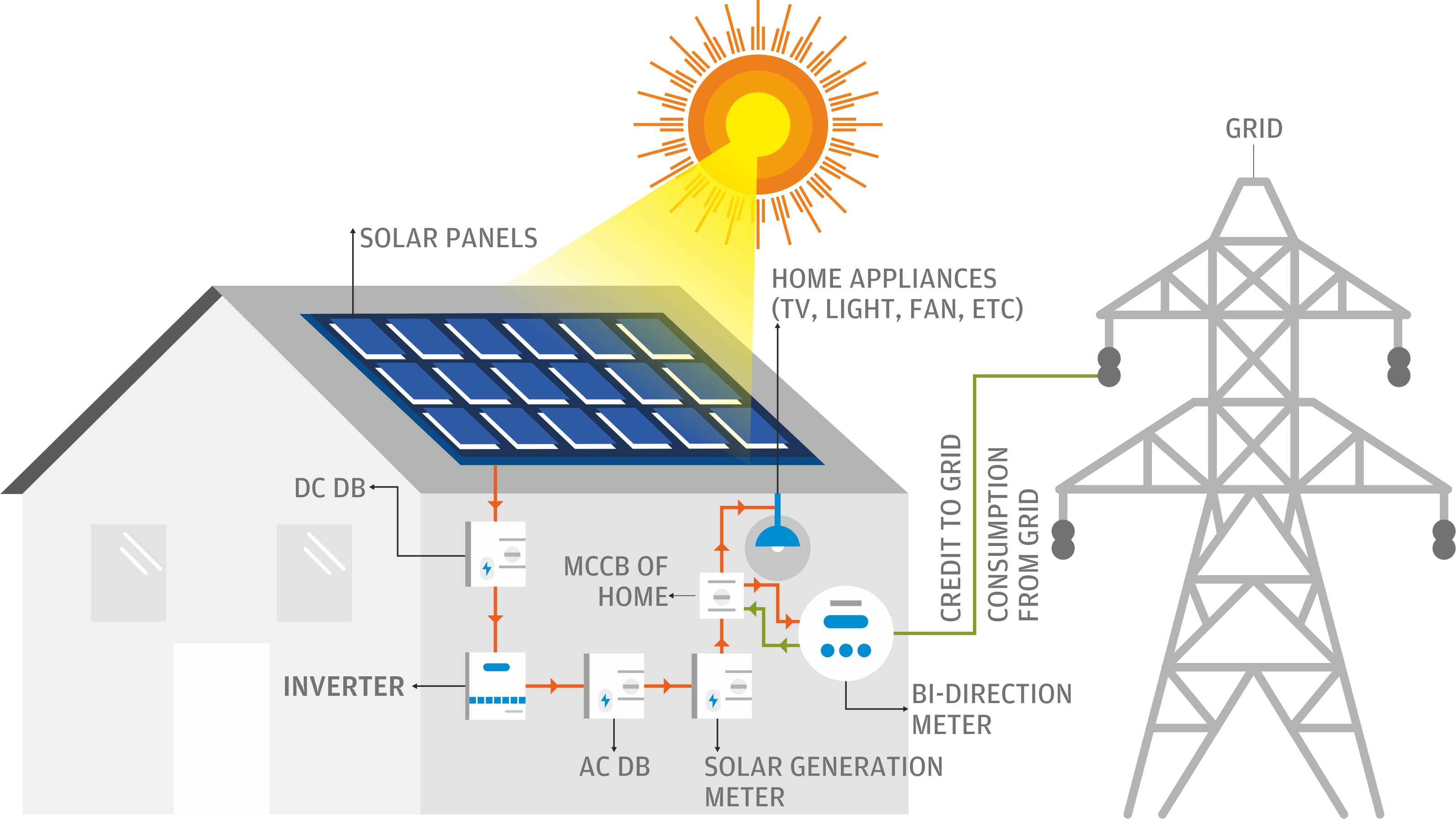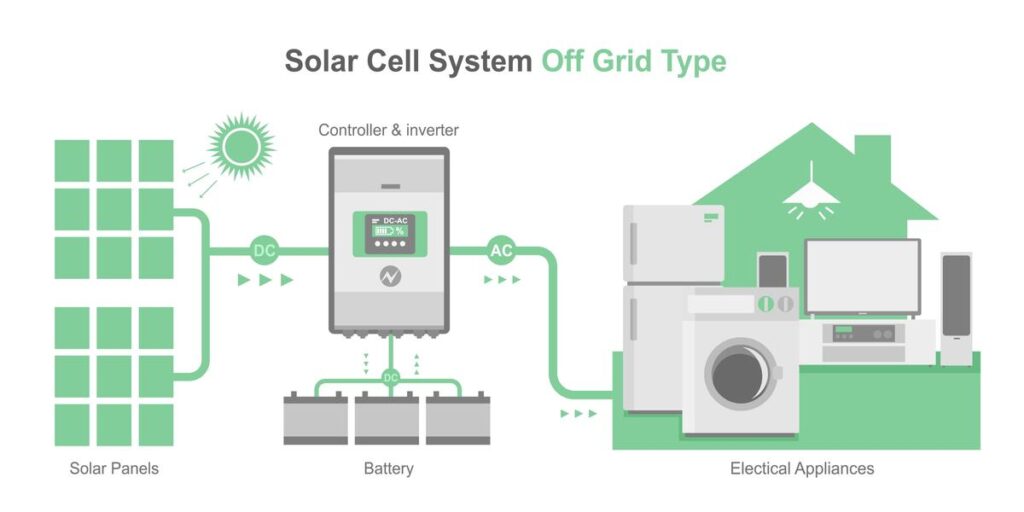
Types of solar roof top
Solar rooftops are becoming increasingly popular as a means to harness solar energy for various applications. There are several types of solar rooftops that can be installed, depending on the structure and requirements of the building. Here are some of the common types of solar rooftops:
On-grid

In This System, the energy Produced by The Solar Panels is Directly Exported to The Power Supply Agency/Department (Govt.) The government will Deduct the Exported Units or According to their PPA (Power Purchase Agreement) from the Consumed Units by The User at The Month End of the Billing Cycle. This Is Also Called “Net-Metering/Gross Metering”. This System Has Only a Drawback That It Needs Grid Power Also While Exporting the electricity to the Grid. If There Is Power Cut during Day Time It Doesn’t Work and the Whole System will Shut Down. Given Figure Is a Grid-Connected System.
Off-grid

The Given Schematic Diagram Defines the Sunlight Is Captured by The Solar Panels and is Stored as DC Electricity in The Battery Bank with the Help of a Charge Controller. The Charge Controller Monitors the Battery Voltage and Grid Supply. Further Inverter Connects with the Batteries to Converts DC Volt into AC Electricity and Then Transmitted to The Loads in The House/Commercial Building. The Connected Appliances Run on Solar Energy Throughout the Day or Till the Availability of Solar Power and After That Automatically Shift the Load on Back-up then Grid Power Respectively. You Can Also Change The Scenario Solar-Grid-Backup. In Case of a Power Cut, This System Works as a Normal Inverter/Generator. In This System, You Need Not Install an Extra Inverter or Generator for Back-Up.
Hybrid

The HYBRID Solar String Inverter is a combination of On-Grid and Off-Grid. This inverter delivers very high-efficiency levels, runs reliably, and demonstrates its’ high technological maturity day after day. Equipped with special materials like silicon carbide and a raft of optimized features. With its wide input range from 490 to 800 Vol., fast and precise MPPT tracking. The inverter has inbuilt data monitoring which can kick start working with the help of an Ethernet cable.

In a hybrid system, both battery and grid are connected to the inverter. It works out as a combination of both On-Grid & Off-Grid systems. Similar to the other systems, solar panels are used in hybrid systems to convert sunlight into electricity. The inverter is then used to convert DC into AC supply. Now, from here the inverter first provides electrical supply to the home & then to the batteries. When batteries are fully charged then the left energy will be sent to the grid. At night, when solar panels stop working, the inverter connects the home supply with the grid instead of the battery. If there is a power outage at night, then in this situation, the inverter will connect the home with batteries.
